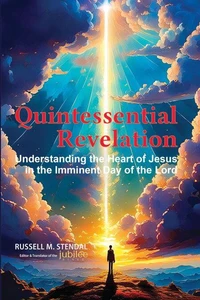What, exactly, does the tabernacle of David represent? In the new covenant there is only one mediator between God and man. This is the Lord Jesus Christ, the living Word of God, and he is presently seated upon a heavenly throne, high above all things (Psalm 138:2). The ark is a representation of Jesus Christ and of how our reconciliation with God the Father is made possible. The tabernacle of David depicts the heavenly realm touching the earth and is a living, prophetic parable of how we may come into a direct and personal relationship with God through Jesus Christ without intermediary clergy or religious, legalistic ritual; thus, we may become registered as citizens of heaven (Hebrews 12:18-24).
The once-and-for-all blood sacrifice at Calvary was required in order to put the new covenant into effect. However, the fullness of what is represented by the tabernacle of David (with the ark as its sole piece of furniture) will be restored at the second coming. In that day I will raise up the tabernacle of David that is fallen and close up its breeches; and I will raise up its ruins, and I will build it as in the days of old .
(Amos 9:11-12, Acts 15:16)When God decided to cut off the corrupt house of Eli he said: And I will raise me up a faithful priest that shall do according to that which is in my heart and in my mind, and I will build him a sure house, and he shall walk before my anointed [Heb. Messiah] for ever. (1 Samuel 2:35)The faithful priest for whom God would build a sure house could not have been Samuel. The fact that he will walk before God's anointed (Messiah) forever means that this does not refer directly to Jesus Christ.
The only sure house that I can see that fits this bill is the house of David (1 Samuel 17), which continued in God's favor until the birth of Jesus Christ, and in Christ the royal priesthood (1 Peter 2:9) of the order of Melchisedec (Psalm 110:4) continues forever; this even includes us if we are in Christ (Revelation 1:6). And in mercy shall the throne be established and he shall sit on it in the tabernacle of David, judging and seeking judgment and hastening righteousness (Isaiah 16:5).
The prophetic numbers of the Psalms, once decoded according to their trajectory through the Scriptures, unlock the stunning messianic narrative that will soon take place.
What, exactly, does the tabernacle of David represent? In the new covenant there is only one mediator between God and man. This is the Lord Jesus Christ, the living Word of God, and he is presently seated upon a heavenly throne, high above all things (Psalm 138:2). The ark is a representation of Jesus Christ and of how our reconciliation with God the Father is made possible. The tabernacle of David depicts the heavenly realm touching the earth and is a living, prophetic parable of how we may come into a direct and personal relationship with God through Jesus Christ without intermediary clergy or religious, legalistic ritual; thus, we may become registered as citizens of heaven (Hebrews 12:18-24).
The once-and-for-all blood sacrifice at Calvary was required in order to put the new covenant into effect. However, the fullness of what is represented by the tabernacle of David (with the ark as its sole piece of furniture) will be restored at the second coming. In that day I will raise up the tabernacle of David that is fallen and close up its breeches; and I will raise up its ruins, and I will build it as in the days of old .
(Amos 9:11-12, Acts 15:16)When God decided to cut off the corrupt house of Eli he said: And I will raise me up a faithful priest that shall do according to that which is in my heart and in my mind, and I will build him a sure house, and he shall walk before my anointed [Heb. Messiah] for ever. (1 Samuel 2:35)The faithful priest for whom God would build a sure house could not have been Samuel. The fact that he will walk before God's anointed (Messiah) forever means that this does not refer directly to Jesus Christ.
The only sure house that I can see that fits this bill is the house of David (1 Samuel 17), which continued in God's favor until the birth of Jesus Christ, and in Christ the royal priesthood (1 Peter 2:9) of the order of Melchisedec (Psalm 110:4) continues forever; this even includes us if we are in Christ (Revelation 1:6). And in mercy shall the throne be established and he shall sit on it in the tabernacle of David, judging and seeking judgment and hastening righteousness (Isaiah 16:5).
The prophetic numbers of the Psalms, once decoded according to their trajectory through the Scriptures, unlock the stunning messianic narrative that will soon take place.

 , qui est-ce ?
, qui est-ce ?